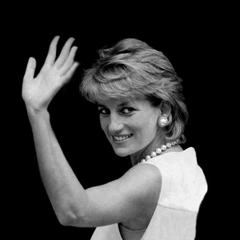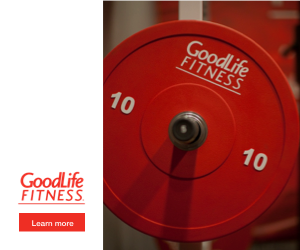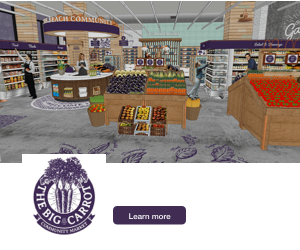Princess Diana’s Legacy of Kindness
Diana’s reputation for working tirelessly on behalf of charitable causes that has kept her in the hearts of people around the world since her death in a Paris car accident on August 31, 1997.
Diana’s passion for giving was born not out of the royal family’s tradition of philanthropic work but of her sincere desire to help.
Princess Diana
Princess Diana’s Legacy of Kindness
“I’d like to be a queen of people’s hearts.”
And she was. Dubbed “the people’s princess” by Prime Minister Tony Blair, Diana, Princess of Wales, was famous for her beauty, her status as a fashion icon and her very public transition from a naive 20-year-old who married the 32-year-old Prince of Wales to a savvy, determined woman set on doing things her own way.
But it’s Diana’s reputation for working tirelessly on behalf of charitable causes that has kept her in the hearts of people around the world since her death in a Paris car accident on August 31, 1997.
Diana’s passion for giving was born not out of the royal family’s tradition of philanthropic work but of her sincere desire to help. In 1995, she explained to BBC journalist Martin Bashir that she was in a unique position to help—not just because of her status and fame, but because she felt an “affinity” with those who were suffering, as she had suffered with bulimia and anxiety in the years after she married Charles.

-Advertisement-
“I think the biggest disease this world suffers from in this day and age is the disease of people feeling unloved,” she said in that interview. “I know that I can give love for a minute, for half an hour, for a day, for a month—I’m very happy to do that and I want to do that.”
Reaching Out to Outcasts
Diana’s fearlessness and compassion led her to work on behalf of those she described as rejected by society: victims of HIV, AIDS, leprosy. In 1987, she was the first member of the royal family to touch a person suffering with HIV or AIDS without gloves. She held the hand of a dying AIDS patient.
John O’Reilly, a nurse at the United Kingdom’s first unit dedicated to HIV and AIDS—which Diana herself opened—spoke of the astonishing gesture’s impact at a time when many people believed the disease could be transmitted via touch: “There was a lot of AIDS phobia, a lot of homophobia. Princess Diana demonstrated that she cared because she took everybody’s hand.”
The gesture was more than a shared moment between princess and patient. It was a global game-changer. Diana wanted the public to feel the compassion that she felt and eliminate the fear surrounding victims of the disease.
“HIV does not make people dangerous to know. You can shake their hands and give them a hug,” she said. “Heaven knows they need it.”
Her charity work expanded to include the Leprosy Mission in Great Britain, of which she became patron. Another of the causes she was most famously involved with was that of land mine removal, and she was photographed walking through an Angolan minefield wearing protective gear.
The Halo Trust, the world’s largest humanitarian mine clearance organization, says that Diana’s work was crucial in “drawing the world’s attention to the horrific legacy of land mines” and raising awareness of the charity’s clearance of 1.4 million land mines from war-torn countries since 1988.
Related: All the TV Specials Celebrating Princess Diana’s Life 20 Years After Her Death
The Legacy Lives On
In her lifetime, Diana was patron of more than 100 charities, and the impact of her charity work was felt across the globe. Today, her charitable legacy lives on, including through the work of her sons, Princes Harry and William, and William’s wife, Kate, the Duchess of Cambridge.
Prince Harry is currently a patron of the Halo Trust and recently helped detonate several mines with a Halo team in Mozambique.
Prince William is patron of Centrepoint, a homeless hostel to which Diana brought her sons for visits when they were young.
“I want them to have an understanding of people’s emotions, people’s insecurities, people’s distress and people’s hopes and dreams,” she said of her sons.That understanding is evident in all of the princes’ charitable pursuits. In fact, when it comes to giving back, both of Diana’s sons have embraced a transparency never before seen from the royal family.
In July 2016, Prince Harry was tested for HIV in a live video broadcast on the royal family’s Facebook page. He explained that his aim was to help destigmatize the disease and make everyone feel “relaxed about taking HIV tests.” The Terrence Higgins Trust, an HIV charity, later described the video as “a groundbreaking moment.”
Not long after the horrific massacre at Pulse nightclub in Orlando, Florida, Prince William became the first member of the royal family to appear on the cover of a gay publication. In the July 2016 issue of Attitude magazine, he was quoted as saying, “No one should be bullied for their sexuality or any other reason. You should be proud of the person you are, and you have nothing to be ashamed of.”
Breaking the Code
During her 1995 interview with the BBC, Diana opened up about her struggle with postpartum depression and the effects it had on her. Diana’s admission that she was the first person in the royal family to be “openly tearful” would later give her sons the courage to be similarly open about their own mental health.
This year, in classic Diana style, Harry broke with the royal family’s code of silence surrounding their personal lives when he said that he came close to a “complete breakdown” after his mother’s death, and that for 20 years he dealt with the tragedy by “refusing to think about my mom.”
Heads Together—a charity spearheaded by William, Harry and Kate—is very much about opening up the conversation about mental health, promoting the hashtag #oktosay in order to do so. Kate also is patron of many other charities that support mental health, including Place2Be, which provides support to children in schools.
“I know that I was lucky,” Kate has said. “My parents and teachers provided me with a wonderful and secure childhood where I always knew I was loved, valued and listened to. But, of course, many children are not so lucky.”
Standing Like a Stone
In 2012, the Royal Foundation of the Duke and Duchess of Cambridge and Prince Harry absorbed the Diana, Princess of Wales Memorial Fund. Established in 1997, the fund was meant to further Diana’s mission of helping vulnerable people and raise awareness of what were once seen as “unfashionable” causes.
Forty-seven thousand people around the world have received the Diana Award, presented to young people aiming to improve the lives of others. The staggering number of recipients proves—as explained in a statement from the award committee—“a whole new generation of people are carrying on her work to change the world for the better, sharing the same characteristics Diana was known for in her life: compassion and kindness.”
Diana once said, “Carry out a random act of kindness with no expectation of reward, safe in the knowledge that one day someone might do the same for you.” She could never have predicted how her sons and their loved ones would come to embody this sentiment as passionately as she did.
“Two things stand like a stone,” she said. “Kindness in another’s trouble, and courage in your own.” Two decades after her passing, Diana’s own legacy of kindness is a third.











